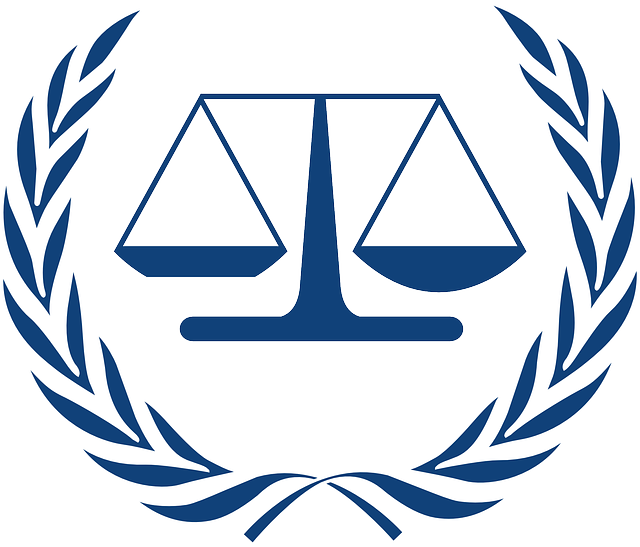Oregon prioritizes child welfare through a robust system governed by comprehensive laws and regulations led by the Department of Human Services (DHS). Citizens are encouraged to report suspected abuse or neglect, initiating a detailed investigation by local Child Protective Services (CPS). The state's laws balance child protection with parental rights, employing legal interventions as a last resort. Foster care and adoption services are streamlined, ensuring stable environments for vulnerable children while maintaining transparency through independent oversight. Oregon's commitment to its child welfare laws results in secure, nurturing connections for all involved.
Oregon’s child welfare system is governed by a comprehensive set of laws and regulations designed to protect vulnerable children. This article delves into the key aspects of Oregon child welfare laws, including jurisdiction, reporting procedures, removal processes, parental rights, foster care placement, and accountability mechanisms. Understanding these legal frameworks is essential for parents, caregivers, and professionals navigating the complex landscape of child protection in Oregon.
- Jurisdiction and Authority: Understanding Oregon's Child Welfare System
- Reporting Suspected Abuse or Neglect: Obligations and Procedures
- Removal and Placement: Legal Process and Temporary Custody
- Parental Rights and Responsibilities: Preservation and Termination
- Foster Care and Adoption: Regulatory Framework and Support Services
- Accountability and Oversight: Ensuring Compliance and Protecting Children's Welfare
Jurisdiction and Authority: Understanding Oregon's Child Welfare System

Oregon’s child welfare system is governed by a comprehensive set of laws and regulations designed to protect and nurture at-risk children within the state. The Department of Human Services (DHS) plays a central role in administering these policies, ensuring that all children in Oregon have access to safe, stable, and nurturing environments.
The jurisdiction of the Oregon child welfare system extends to various aspects of child protection, including investigation of reports of abuse or neglect, placement of children in temporary or permanent homes, and provision of supportive services to families. These laws are regularly updated to reflect evolving best practices and societal norms, ensuring that the state’s approach remains current and effective in promoting the well-being of Oregon’s youth.
Reporting Suspected Abuse or Neglect: Obligations and Procedures

In Oregon, the reporting of suspected child abuse or neglect is a critical aspect of upholding the state’s robust child welfare laws. Individuals who witness or suspect any form of harm to a minor, including physical, emotional, or sexual abuse, are legally obligated to report it to the appropriate authorities. This responsibility extends to various entities such as healthcare professionals, educators, and caregivers, ensuring a network of protection for Oregon’s children. The process typically involves contacting the local Child Protective Services (CPS) agency, providing detailed information about the suspected abuse or neglect, and allowing CPS investigators to conduct a thorough assessment.
The procedures for reporting are designed to maintain confidentiality while prioritizing the child’s safety. When making a report, individuals should include specific details such as the child’s information, the nature of the suspected abuse or neglect, and any relevant observations or conversations that support the claim. Oregon child welfare laws empower citizens to play an active role in protecting children, ensuring that potential risks are promptly addressed by the appropriate government agencies.
Removal and Placement: Legal Process and Temporary Custody

In Oregon, child removal and placement procedures are governed by a comprehensive set of child welfare laws designed to ensure the safety and well-being of vulnerable children. When child protective services (CPS) determines that a child is at risk, they may initiate a legal process to secure temporary custody. This involves filing a petition with the court, which includes detailed information about the alleged abuse or neglect and the reasons for removal. The court then conducts a hearing to review the evidence and decide whether to grant temporary custody to the state.
During this period, children are placed in safe, temporary homes while CPS works with their parents or guardians to address the underlying issues. The legal process aims to balance the rights of families with the need to protect children. Temporary custody can last for several months, during which time the family may be required to participate in services such as therapy, parenting classes, and drug treatment to regain custody of their child.
Parental Rights and Responsibilities: Preservation and Termination

In Oregon, child welfare laws prioritize the well-being and safety of children while also recognizing the importance of parental rights. Parents have a fundamental right to make decisions regarding their child’s upbringing, but these rights come with responsibilities. Oregon child welfare laws ensure that parents are equipped to provide a stable and nurturing environment, promoting the healthy development of their children. This includes meeting basic needs for food, shelter, education, and medical care, as well as fostering a loving and secure home life.
When concerns arise about a child’s safety or well-being, Oregon child welfare regulations may intervene. Parental rights can be temporarily suspended if there is evidence of neglect, abuse, or an inability to provide a safe and stable home environment. In extreme cases, termination of parental rights may be considered when the best interest of the child is at stake and efforts to rehabilitate the parent have been exhausted. These actions are taken with the ultimate goal of ensuring the child’s long-term stability and happiness.
Foster Care and Adoption: Regulatory Framework and Support Services

In Oregon, foster care and adoption services are governed by a comprehensive set of child welfare laws designed to protect and support vulnerable children and families. The state’s regulatory framework ensures that foster parents receive adequate training, support, and resources to provide a stable and nurturing environment for foster children. This includes access to ongoing monitoring, case management, and specialized services tailored to each child’s unique needs. Oregon’s Department of Human Services plays a pivotal role in coordinating these efforts, working closely with local communities and non-profit organizations to expand the network of foster care providers.
The adoption process in Oregon is likewise streamlined through strict regulations that prioritize the well-being of adopting families and the children they seek to adopt. The state offers various support services, including legal assistance, financial aid, and post-adoption counseling, to ensure successful transitions for both foster children and their adoptive parents. These measures reflect Oregon’s commitment to adhering to its child welfare laws, fostering secure and lasting connections between children in care and their permanent families.
Accountability and Oversight: Ensuring Compliance and Protecting Children's Welfare

Oregon child welfare laws emphasize a robust system of accountability and oversight to ensure compliance with regulations and protect children’s welfare. The state has established various mechanisms, including independent oversight bodies, to monitor and investigate child welfare practices across all agencies involved in the care and protection of minors. This stringent approach ensures that institutions adhere to Oregon child welfare laws, which mandate specific standards of care, reporting procedures, and case management protocols.
Regular audits, performance evaluations, and public disclosures play a pivotal role in maintaining transparency and accountability. These measures help identify areas for improvement while holding organizations responsible for upholding the rights and well-being of children under their care. By implementing such oversight, Oregon aims to prevent any potential violations of its child welfare laws and ensure that all efforts are directed towards providing secure and nurturing environments for vulnerable youth.






